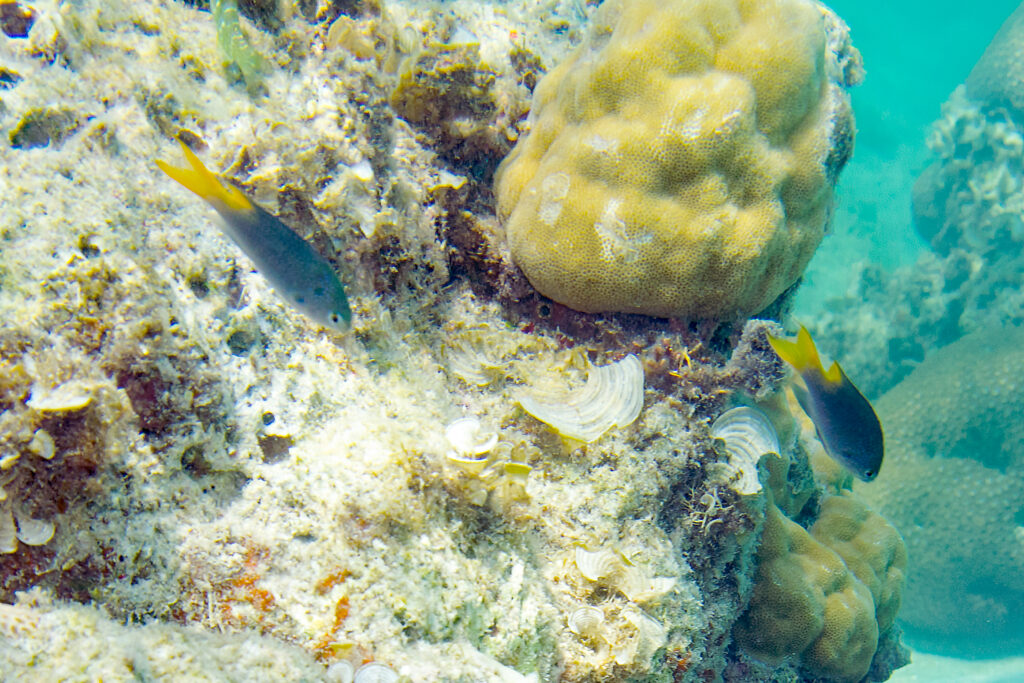
Biota’s Palau facility has released a first wave of captive-bred Neopomacentrus azysron, the Yellow Lyretail Damselfish. With no prior reports of this species having been spawned and reared in captivity, it represents yet another captive-breeding first claimed by the marine ornamental aquaculture powerhouse.
“Limited quantities of this new captive-bred offering are available now,” says Biota. “Check with your favorite retailer that carries Biota fish, or if you just can’t find them anywhere, they are currently available directly through Biota’s direct-to-consumer retail website.”

About Neopomacentrus Damselfishes
Members of the genus Neopomacentrus tend to share a common form. All are somewhat elongate, and are rather small fishes, with maximum sizes ranging from just 2.5″ (6 cm) in the smallest species to just over 4″ (11 cm) in the larger ones. They generally have dark brown or gray bodies, often with some yellow in their fins, and almost universally bear extensions on their caudal, dorsal, and anal fins. Their deeply forked tails often develop into stunning lyretails as mature fish.
As a group, they are shallow-water species, with none being found lower than 30 meters, and many restricted to much shallower habits. Some species are known to inhabit brackish and freshwater areas including Neopomacentrus taeniurus, the Freshwater Demoiselle. These are robust fish. While native to the Indo-Pacific, including one species in the Red Sea, the genus has also made a foray into the Atlantic; N. cyanomos, the Regal Damsel, is now considered an invasive species in the Gulf of Mexico.
Overall, Neopomacentrus damsels are not as common in the aquarium trade, perhaps owing to their less striking coloration compared to their more popular relatives. But, if they are added to an aquarium as a group while young, they are not overly aggressive and will grow up to establish small territories while overall getting along with each other.
Speaking from personal experience, I believe Biota’s new captive-bred Yellow Lyretail Damsels will make an easy addition for aquarists looking to add a group of damsels. Damsels of this genus are very easy to work with; I even maintained a spawning trio of Neopomacentrus nemurus in a 20-gallon aquarium with a pair of clownfish, and it all worked out well. Given my own sentiment that I would personally welcome the chance to keep damsels of this genus again, I can wholeheartedly encourage you to do the same if some of Biota’s Yellow Lyretail Damselfish are available to you.





